#Kingdom of HORUS
Text
youtube
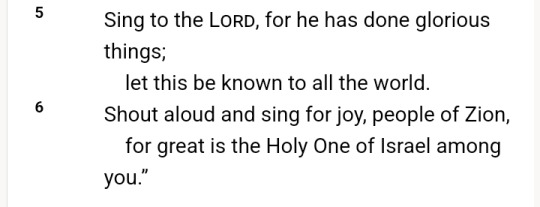
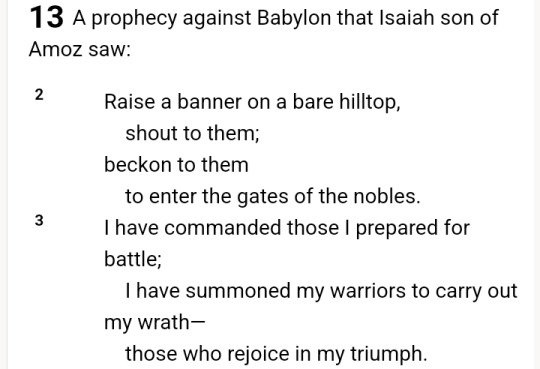
youtube

#Eminem#Speech#Jesus Christ#Youtube#Apocalypse#St. John#Nature#King Jesus Christ#King#Kwisatz haderach#Ubermensch#Royal#Royal priesthood#Church of Christ#Marred servant#Hand of god#Melchizedek priesthood#King Mashioch#Imam Mahdi#Isa#Isaiah#Messiah ben david#Lord's hand#Acts#Christianity#Actual Christianity#Kingdom of HORUS#The Dawn
0 notes
Photo
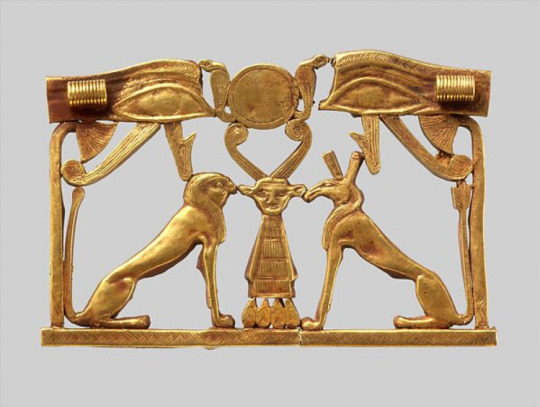
A Middle Kingdom pectoral with Horus and Set as sphinxes. Formerly displayed at the Met.
504 notes
·
View notes
Text

Statue of Horemheb and Horus
In this nearly life-size statue made of white limestone, Horemheb is seated on the right side of Horus, who places his right arm around the king’s waist. The god’s left hand is holding the sign of life. The two figures greatly resemble each other.
Both have bare upper bodies and wear the shendyt kilt and the Pschent or double crown in ancient Egypt. The king is also wearing the striped royal nemes headdress and a false divine beard. On first inspection, the sculpture appears to be in a perfect state of preservation, but this is deceptive.
New Kingdom, late 18th Dynasty, reign of Horemheb, ca. 1319-1292 BC. Now in the Kunsthistorisches Museum, Vienna. Inv. 8301
Read more
376 notes
·
View notes
Text
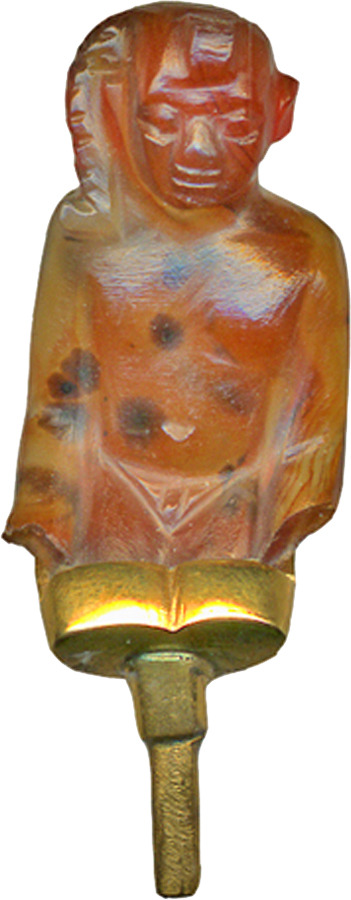

Amulet
Egyptian, 1200-736 BCE (New Kingdom-early Third Intermediate Period)
The feet have broken away from this black-speckled carnelian representation of Horus-the-Child, but the angle of the legs suggests he was seated on his mother's lap. A loop protruding from the shoulders is also broken off.
29 notes
·
View notes
Text
I think my favourite Egyptian mythology thing is that you could argue (based on some things said in certain texts) that Horus is Set’s best friend by default.
Uhhh basically: In a lot of spells in the Greek Magical Papyri say that Set hates friendship and ruins every relationship he’s ever been in because of how the strong the evil and hatred vibes he exudes are. Therefore, he has no friends. However, there are a bunch of other texts that say that Horus and Set became friends after the conflict around which one of them would be king was settled. And when the texts elaborate on how this happened, they usually have a part where whoever decided which one of them should be king tells them that they have to get along with each other now. Therefore, Horus is Set’s friend (because he has a court order that says he has to be). And if Set has no other friends, that means Horus is his only friend. Which means Horus has to be his best friend, because there are no other potential candidates.
Oh also, there’s a spell in the Pyramid texts that lists a bunch of gods along with other gods that they like, and they mostly list gods alongside their mothers, like Horus and Isis, Sobek and Neith, etc. But when they get to Set, they list him alongside “the two reconciled gods” (which is an epithet that refers to both Horus and Set specifically in the time after the conflict over kingship was resolved).
#Anyway. Egyptian mythology sitcom when#egyptian mythology#egyptian gods#This is a joke post so I’m ignoring some things for the sake of being funny#I know about Ra and Anat being Set apologists in the New Kingdom okay#But. To nitpick your nitpicks. Those things only show up in very specific eras.#While the Reconciled gods thing is pretty consistent throughout Egyptian history.#So uh. Definitely best friends by default. /j#ava has thoughts#ancient egypt stuff#Heru#sutekh#horus#set
80 notes
·
View notes
Text
So from what I’ve been told, Mozzarella is based on Hathor, with Smoked Cheese based on Horus and Burnt Cheese on Anubis
And from what I understand, in Egyptian mythology, Hathor and Horus are married (or she’s his mother, but I’m not sure what the most consistent version of that is. But the latter doesn’t really work for what I’m going for, so shh)
So like, my thought process is, if we assume Smoked Cheese and Burnt Cheese are brothers because of Horus and Anubis, what if Mozzarella and Smoked Cheese are married?
#and yeah it can’t be the mother option since the two Cookies very clearly do not seem to be that#so yeah what if they’re married#I don’t think I worded this well#cookie run#cookie run kingdom#mozzarella cookie#smoked cheese cookie#speculation#horus#hathor#theory#random stuff
42 notes
·
View notes
Text
Golden Cheese is obviously based on Ra,the god of the sun and king of the deities. Based on the murals and her feathers
The Cookie with Ears is based on Anubis,the god of the dead, mummification, and embalming. I am not sure if he serves the same purpose here; he seems more like a guard. We shall see in the update.
As for the others,it is a bit hard to pin down for me.
My closest guess for the cookie on the computer is based on Thoth,god of the moon, sacred texts, mathematics, the sciences, magic, messenger and recorder of the deities, master of knowledge, and patron of scribes.(or hathor,goddess of beauty (including cosmetics), sensuality, music, dancing, and maternity)
While the cookie with the red hair is based on Horus, the god of war and the sky.Don't quote me on that.
#cheese talks#cookie run#cookie run kingdom#golden cheese cookie#egyptian mythology#egyptology#egyptian gods#horus#Ra#anubis#but that a theory a cookie run theory#thoth#hathor#burnt cheese cookie#mozzarella cookie#smoked cheese cookie
41 notes
·
View notes
Photo


AN EGYPTIAN FAIENCE PECTORAL
NEW KINGDOM, 19TH DYNASTY, 1295-1069 B.C.
4 1⁄8 in. (10.4 cm.) long.
The image of the jackal god Anubis atop his shrine was significant in the protection of the deceased, as was the wadjet-eye, associated with Horus. Both appear on the obverse of this pylon-shaped pectoral, while the reverse features the djed-pillar and tyet-amulet, symbolic of Osiris and Isis.
#AN EGYPTIAN FAIENCE PECTORAL#NEW KINGDOM 19TH DYNASTY 1295-1069 B.C.#jackal god Anubis#Horus#Osiris#isis#archeology#archeolgst#ancient artifacts#history#history news#ancient history#ancient culture#ancient civilizations#ancient egypt#egyptian history
29 notes
·
View notes
Text
already said this on discord, but I am OBSESSED with chaka and pell's fruits being mutt-mutt and tweet-tweet
#one piece's answer to horus and anubis !!! prepared to defend their kingdom and royal family to the death !!!!!!! cool as fuck !!!!!#and then you look at their fruits and it's just 'ya this is the mongrel one xx'; 'this one is named after a small bird noise xx'
6 notes
·
View notes
Text
*kicks down genshin fandom door*
The statues have their right foot's forward!!!!

Egyptian statues always had their right foot in front the bare proper respect for Pharaoh. They seem to be guards for the pyramid behind them. Seeing as it's a pyramid I'm guessing tomb. Maybe to the last Dendro Archon?
So either they're guards showing their respect to their dead Archon. Or Mihoyo just copy pasted a Thoth statue and didn't bother to check the meaning before putting it in their ruins.
#Sumeru#kingdom hearts#genshin impact#egypt#gods of egypt#thoth#its thoth or horus#but the longer dip in the beak#looks more like an ibis than a hawk
27 notes
·
View notes
Text
Seth Headcanon (sfw/nsfw)
ennead Seth x gn!reader

☥•☥•☥•☥•☥•☥•☥•☥•☥•☥•☥•☥•☥•☥•☥•☥
-You fell first, he fell harder!
You liked when he played as the bad, distant one but in reality he is the one always looking out for you!
If you were a god you met after a fight between him and Hours, the ruined your temple and you forced them to repair it. You teased him because you knew he wouldn’t repair it himself, he would force someone else, but you liked when he starts “I’m Seth, the god of…”.
If you were a civilian he got interested when you saved him in a battle. You weren’t a warrior nor someone interested in kingdom’s honor. You couldn’t stand violence! Even though you got along with the god of violence and the desert’s tempests. Once he heals from the accident he invited you to his temple, he walked around with you asking some questions and he then realized he might feel something special for you!
If you are in danger he would be there to save you, he told you only had to call his name and he will come to you less than a second.
You knew about his relation with his Horus and Anubis, you would bow whenever you saw them and Seth would step in front of you in defense mode. Hours definitely bowed back. He respects you!
When he announced to his people about your marriage he couldn’t hide the nervousness. And when the day came he couldn’t stop looking at your nervous, shy expression.
Some times he would tease you around people by caressing your butt cheek and if you were sitting on the throne he would slightly pull up your skirt/vest resting his hand on your thigh.
He didn’t touch you the night of your wedding, he was scared to hurt you. He held you close, your head resting on his chest listening to his heart beat.
(NSFW)
At your first time with him he would hug you and kiss your tears away whispering sweet nothings while he rested his forehead on yours.
Once you got used to it he would tease you or some time force convince you to do it for all night long.
He liked it in every position and he is definitely the one in charge.
”Take me deeply” or “someone down there is needy” his most used lines during sex.
His favorite moment is in the bath or when you just finished bathing and your body is still wet dripping water
(Sfw)
•He won’t let his ex-wife get close to you he wants to protect you from brain wash from the other gods that tries to make you change or doubt your feelings towards him
•If you get pregnant he will definitely stick around and never leave you alone. (Fem!reader)
•^plus he will spend all day listening or talking to your tummy from the moment you told him about your pregnancy.
•If you adopt a child he will definitely sulk around scared that the child might grow feeling for you in the future but once he saw the child he won’t let you hold him because he wants to spend quality time with someone he never thought he would care that much. (He wants to be the favorite parent 🙄)
•He would teach everything he knows to their child but he wants the kids be smart and calm like you.
“You should listen to your mother/father..” he will say when the child won’t go to sleep
•He wants to take walks or play on the bed with you and the child/children.
•He would cover your mouth and hold you from behind when you try to tell the kids about your first kiss or romantic moment with him.
•His eyes will go 😍 when he watches you take care of the kids. (Yours or from the village when you walked around)
•There won’t be a night he won’t kiss you good night or stroke your hair to sleep as you rest on his chest.
•He will love you more and more by day by day.
#ennead#ennead x reader#seth x reader#hours x reader#anubis x reader#ennead seth#seth ennead#egyptian gods#manwha characters x reader#manwha
508 notes
·
View notes
Text



youtube
Death Sentence,
No Heavens for you,
Because you're bent on filling pews.
youtube
youtube
#Carnal#Judgment#Judgment Day#angel of judgment#Esoteric#Pen#Pen is mightier#Freedom#LIBERTY#DAWN#NEW AGE#KINGDOM#ETERNITY#Heracles#Enoch#St Germaine#Hermes#Hermes Trismegistus#Imhotep#Khemet#Horus#Sky#Eagle#Sun#Victory#Life
0 notes
Note
. . .Osiris
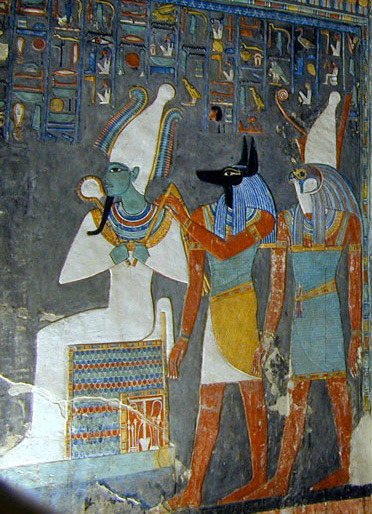
Osiris (Great and Beautiful is He) is the God of the Underworld; its King and Pharaoh ruling over the Duat. He is pictured here on the far left, His skin green and His body in mummiform. This is commonly how He is depicted; as a green-skinned, mummified man.
Son of Nut, the Sky Goddess, and Geb, the Earth God, Osiris was the first King of Egypt in accordance with Kemetic mythology, although there are stories that recount Geb, His father, being King before Him. There are a great deal of myths and stories that surround and involve Osiris, and I suppose it is important to at least skim over them before discussing hard facts about Him, as it gives some reference as to who He is and what the culture surrounding Him is like.
Osiris Myth
After the world was created, the Demiurge (who changes according to myth, and can be Neith, Ra, Amun, Ptah, or others) produces children; in the most popular form of this creation story, it is usually Ra who births the first Gods. They are Shu and Tefnut, Air and Moisture. Shu and Tefnut then form a union and birth two children of Their own: Nut and Geb, Sky and Earth. Nut and Geb were very much in love and refused to separate from each other, which, of course, caused a problem, because if the sky and the earth are eternally in contact, there is no space for anything to live and walk upon the earth. Ra made it so Nut and Geb were forever separated, by having Shu, air, stand atop Geb and hold Nut up as the sky. But Nut was already pregnant. When Ra discovered this, He was enraged, and forbade Nut from ever giving birth on any day of the year.
Nut cried to Djehuty (Thoth), and Thoth devised a plan. He went to Khonsu, God of the Moon, and set up a gamble, saying that every round of the game Senet Khonsu lost, He would have to give Nut some of His moonlight. Khonsu ended up losing so many times that Nut had enough moonlight for five days––five days that weren't in the calendar. This allowed Her to give birth on those five days, and on each day She had a different child; Ausir (Osiris), Wr-Heru (Horus the Elder), Sutekh (Set, Seth), Auset (Isis), and Nebet-Het (Nephthys). Nut and Geb were still forever separated by atmosphere (Shu), but the five Gods were birthed, and Osiris, as the eldest son, became King of the Living World.
As a side note, all Gods do have ancient Egyptian names which are different from Their Greek and now modern names. For convenience's sake, and to avoid confusion, I will use the names They are most known by; Their Greek/modern names. And as another side note, there are a lot of variations on this story. I will be piecing together a lot of different ideas but I will be leaving some things out for the sake of cohesion.
When Osiris came to Egypt, He found the people there to be chaotic and lawless. As King, He instituted laws and spread ma'at, which is truth, justice, harmony, and order. Egypt flourished under His rule and the people were incredibly happy, as all were equal, and with the fertility of the God-King, the crops were always bountiful and food was plenty. He brought not only law and prosperity, but also the right way to worship, and the teachings of agriculture.
Set, God of chaos, confusion, the desert, and of foreigners, and the youngest brother of the Ennead, grew to be quite jealous of His older brother. There are many variations and the most popular variation of this story comes from the end of the New Kingdom (1550-1070 BC), where Set fashions a fabulous coffin in the perfect measurements of Osiris, throws a party, and tells the party-goers that whomever the coffin fits may have the coffin as a gift. When Osiris fits perfectly, Set quickly shuts and bolts the coffin and throws it in the Nile (this version of the myth gives an origin to the idea that people who drowned in the Nile were holy). His coffin drifts downstream and into the Mediterranean, where it washes ashore in Phoenicia, in Byblos. The coffin wedges itself into a growing tamarisk tree, a tree which envelops the coffin. Eventually the tree is cut down and used as a pillar in the palace in Byblos.
Isis, Osiris' wife and sister, searched far and wide for Her husband, and did eventually find Herself in Byblos. The story is quite long and complicated, but in the end She convinced the King to give Her the pillar, and when she returned to Egypt, She hid Osiris in a swampy area of the Nile delta, and bade Her sister, Nephthys, to watch over Him while She went in search of healing herbs. But Seth heard that Osiris was back, and so after interrogating His sister-wife, Nephthys, He found Osiris, cut His body into pieces, and threw them into the Nile.
Isis was horrified at what transpired in Her absence, but She immediately set to work on finding the many pieces of Her husband with the help of Her sister, Nephthys. They managed to find every piece of His body except His phallus, which had been eaten by an oxyrhyncus fish, a fish that was thus forbidden to eat.
With the pieces of Osiris reassembled, and the healing powers of Isis in full power, Osiris was brought back to life, but incomplete. Isis assumed the form of a kite, and from above drew out the seed of Osiris, impregnating Herself with Their child: Horus the Younger. But Osiris, still incomplete, could not properly rule over the land of the living any longer.
This is why He is the ruler of the dead––He was once the king of the living, was killed, and was resurrected, and this is what every ancient Egyptian expected and hoped would happen to them: that they would die and be resurrected. In tombs and mortuary temples you will always see Pharaohs associating themselves with Osiris.
But this long myth I have just told you is not the only version of the story, and in my opinion, it is definitely the longest version of the story. Back in the Old Kingdom and Middle Kingdom there were several different versions; for example, Set's motive is different, ranging from revenge for Osiris kicking him, to revenge for Nephthys (Seth's sister-wife) sleeping with Osiris (which eventually births Anubis). Some texts claim that Seth took on the form of a wild animal, such as a crocodile or a hippopotamus, and killed Osiris that way. In others, Osiris is drowned. In some, the steps surrounding the coffin are skipped, and Osiris is simply cut up, and His pieces scattered around Egypt; a version which explains the many cult centers of Osiris claiming to be a place where Osiris is buried. Osiris' resurrection is also often helped along by other Gods such as Thoth (God of wisdom) and Anubis (God of embalming). In some versions, Set is killed for His actions. In most He is simply defeated and driven from the land, as chaos is necessary for balance and harmony, and thus cannot be killed. And the story that I have told is from the Late Period, recorded by Plutarch, and does not really go along with many Egyptian accounts, which often find Osiris' penis intact.
So that is the Osiris myth with all of its' intricacies and changing rhythms over the course of 4,000 years of Egyptian history. It embodies a huge amount of cultural practices and religious ideas within ancient Egypt, including the idea of truth, harmony, and justice, as well as resurrection, the afterlife, healing, and the workings of the cosmos. I've decided to leave out the later parts involving Osiris' son, Horus, and His fight with Set, for now because this does not directly involve Osiris, and that is our topic for this post.
Tradition, History, and Culture
Worship of Osiris dates back to the Old Kingdom, but the idea of Osiris is likely older than this. Before Osiris was actually Khentiamenti, an agricultural God centered in Abydos, a city which would later become the cult center of Osiris. Khentiamenti means 'Foremost of the Westerners', a title for the ruler of the dead, as the dead resided in the west, where the sun set each day. But Osiris Himself is not found mentioned in any texts or carvings until the 5th Dynasty, where He is depicted as a man wearing a divine wig. Later on He would take on the form we know Him best in––wrapped in a white mummy shroud, wearing an atef crown with ostrich plumes on the sides.
The mummy shroud He is depicted in forever associates Him with death and with the essential story behind Him, which is why I found it so important to start off with the Osiris Myth. This myth is also why He consumed and took the place of Khentiamenti; the name Khentiamenti, Foremost of the Westerners, instead became a title for Osiris as the King of the blessed dead. Another common epithet/name of Osiris is Wennefer (Omnophris), meaning 'The Beautiful One', 'The Beneficent One', and more archaically, 'One Whose Body Did Not Decay'. Among these names He was also called 'The Lord of Love', 'The King of Living', and 'The Eternal Lord'. From the Early Dynastic Period up until the end of the Ptolemaic Dynasty, when Rome conquered Egypt, Osiris was one of the most highly worshipped and revered Gods of Egypt.
Osiris was associated with the Nile river, with its' renewal and life-giving abilities, as one of Osiris' domains and powers was fertility, as well as rebirth. Another of His duties, evidence of which originates in the New Kingdom, was to act as judge of the dead; being King, He sat on the tribunal with the 42 Judges in the famous Weighing of the Heart ceremony. In this ceremony, which took place in the afterlife, the deceased would have to stand before the court and place their soul up for judgement. If it weighed lighter than the feather of Ma'at, representing all justice, truth, and harmony, then the heart acted well in life and would be allowed eternal happiness in the Field of Reeds. If not, the heart, and thus the person, would be consumed by Ammit and committed to nothingness. So Osiris would sit in on this tribunal and judge who entered His kingdom, as it was His domain. In this role, and in His role as King of the Living, as well, He was the embodiment of harmony, law, and justice.
"Most of his appeal was based on his embodiment of the cosmic harmony. The rising Nile was his insignia, and the moon’s constant state of renewal symbolized his bestowal of eternal happiness in the lands beyond the grave. In this capacity he also became the model of human endeavors and virtues..." (The Complete Gods And Goddesses Of Ancient Egypt, p.307)
As I mentioned earlier, Abydos became His cult center, as it was the cult center of the God who came before Him, whose traits He subsumed. It became a very popular burial site, as legends would say that Abydos was where Osiris was truly buried, and the people wanted to be buried as close as possible to Osiris. At one point they believed an ancient tomb there––which was actually the tomb of an Early Dynastic King––to be the tomb of Osiris, which they much revered, and left so many offerings in clay pots that Arabs would later call the site 'Umm el Qa'ab'; Mother of Pots. But this was not the only burial site of Osiris; since many variations of the myth include Set chopping up and dismembering Osiris into many parts, ranging from 14 to 42 different parts. These parts were scattered across Egypt, so many cities and nomes could claim that they had a part of Osiris buried in their domain. For example, far in the south, the island of Bigah claimed to be the burial site of Osiris' left leg, and thus the source for the yearly Nile inundation.
Going back to the Osiris Myth, after Osiris died and became the ruler of the dead, His son took His place as King of the Living: the falcon God, Horus (Heru the Younger). After the brief bout of chaos brought about under Set's rule, Horus took over (after much deliberation from the Gods) and order was restored. Because of this story, Pharaohs would not only associate themselves with Osiris in death, but with Horus in life. Each Pharaoh, as they came to the throne, would become the living embodiment of Horus on earth, the son of Osiris. In this way, Isis was also the mother of every Pharaoh, and their protector. And, to added extent, each Pharaoh would have a personal name, and then a Horus name granted to them when they ascended to the throne.
"It is for this reason that Osiris is so often depicted as a mummified pharaoh; because pharaohs were mummified to resemble Osiris. The image of the great mummified god preceeded the practice of preparing the royal body to look like Osiris... The king's appearance as modeled after Osiris' extended throughout his reign; the famous flail and shepherd's staff, synonymous with Egyptian pharaohs, were first Osiris' symbols as the flail represented the fertility of his land while the crook symbolized the authority of his rule." (Osiris, World History Encyclopedia, Joshua J. Mark)
Osiris can also be represented by a number of physical symbols, such as the crook and flail that He carries in almost all representations of His earthly form. The crook, which is the striped hook He carries, represents power/authority, and is a symbol of the Pharaoh. The flail, which is the instrument in His other hand, represents the fertility of the Nile, and as an extension, the fertility of Osiris Himself. But the crook and flail, though both seen typically as symbols of Pharaonic power, are actually the tools of a shepherd. There is reasonable evidence, thusly, to suggest that the physical origins of the idea of Osiris may not be that of a great King, but of a ruler of a shepherd tribe in the Nile Delta, whose rule was so beneficent that it led to him being worshipped as a God. For Egyptologists, this theory comes from His association with Andjety, a predynastic God-King worshipped in the Delta who also bore the crook and flail as His symbols. This, however, has not and likely cannot be fully proven. But the postulation is still interesting nonetheless!
Osiris' ba soul had its' own culture of worship, a practice of soul-worship that is prevalent in the cults of several other Gods, such as Hathor (HwtHer). In this form, Osiris was known as Banebdjedet, meaning 'The Ba of the Lord of the Djed,' which in English terms means 'The Soul of the Lord of the Pillar of Continuity', as ba means soul, and djed is the symbol for a pillar, which represented the backbone of Osiris. Interestingly, the name Banebdjedet is feminine, as the letter t denotes a feminine word or name in ancient Egyptian; although there are also variations on this name that exclude the t in favour of the alternative, Banebdjed. Banebdjedet, Osiris' ba soul, was worshipped mainly in Mendes, a city in Lower Egypt, in the Delta.
This leads to an interesting point concerning the androgyny of Osiris, a subject I found while researching for this post. Osiris' fertility comes from His castration and then being healed by the mother Goddess, Isis. Not only that, but both men and women identified themselves with Osiris in death. Then the name for His ba personified as another God is feminine, although representations of Banebdjedet are overwhelmingly male. Before anyone attacks me, I am not claiming that Osiris is a genderless God or King––just that He has some traits of androgyny, which I find interesting and love to study in ancient cultures, and I thought it would be good to mention for anyone else similarly interested.
Worship, Festivals, and Cult Activities
When it comes to the practices surrounding Osiris' cult, we actually know a good deal of information regarding the activities of worshippers and priests. Osiris' cult and worship was so widespread and lasted long enough that it could be recorded by the earliest Greek historians, and remained carved in temple walls for thousands of years. Among the most well-known cultic tradition is the Osiris Bed.
The Osiris Bed is rather well documented, as it was an object placed in tombs. It was not a bed for the deceased to lie in, but instead a box made of wood or clay, moulded into the shape of Osiris, in which the fertile Nile soil was placed and seeds were planted. These boxes were then wrapped in white mummy linens, and the seeds sprouted through, representing the resurrection and fertility of Osiris, and the crops that grew each year in cycles. One of the most famous of these beds was found in King Djer's tomb, a King from the Early Dynastic Period; the 2nd King ever of the unified Egypt. Coincidentally (or, perhaps, not so coincidentally) King Djer's tomb was the tomb which pilgrims believed to be Osiris' burial site.
While the Osiris Bed is far from the only practice and tradition of the Osiris cult, it does show the rich cultural practices and symbolism present in His worship. Let's look at some other examples of the practices of Osiris' cult.
Similar to the Osiris bed were Osiris gardens, which were essentially the same concept; fertile soil was planted inside a vessel shaped into the form of Osiris, and seeds were settled within to grow. These beds were tended to during festivals instead of being buried in a tomb.
There were a great many festivals, and each of them quite popular according to their time period, dedicated to the story and symbolism of Osiris. Some festivals started with recounting the mournings of Isis and Nephthys, Osiris' sister-wife and sister, in the form of a drama acted out in a call-and-response format. Another drama acted out for the glory of Osiris was more in the form of an actual fight that anyone could participate in; it was modelled after The Contendings of Horus and Set, which I briefly mentioned as a long and drawn-out argument between Horus and Set over who deserved Osiris' vacant throne after He had died. On this occasion, people would battle out and reenact the events of the story until the side of Horus finally won and victory was achieved. Afterwards, the celebrations commenced in honoring the restoration of order, and the gold-encased shAwyt-nTr (the Holy Statue) of Osiris would be taken out and lavished with offerings. Osiris, in the form of this statue, would be paraded throughout the city of Abydos before being placed in a shrine outside, where He could participate fully in the festivities, and be admired by the commoners who would usually never behold the face of Osiris. This emergence of Osiris from the dark temple's inner sanctuary to the light of the city resembled and represented His resurrection from death into life again. Although this particular festival was celebrated mainly in Osiris cult center of Abydos, it was also celebrated in other cities such as Bubastis in the Delta, Busiris, Memphis, and Thebes, in Upper Egypt.
The Mysteries of Osiris was a series of plays performed annually, and in dramatic, passionate form. It was one of the most popular observances of worshippers, and it told the story that I first told to you––of Osiris' life, His death at the hands of His brother, His resurrection at the hands of His sister-wife, and His ascension into the role we now know Him for. The roles in this reenactments were often taken up by high-ranking officials, and afterwards, the Contendings of Horus and Set would take place, which I just mentioned. These plays would take place over several days.
One festival was called The Fall of the Nile. During this time, the waters of the Nile would recede, and the worshippers of Osiris would go into mourning. One of Osiris' representation on earth was the Nile, and the Nile represented His fertility and life.
Another festival was celebrated on the 19th day of Pakhons, one of the months in the Egyptian calendar, which is roughly equivalent to May in our Gregorian calendar. On this day, the followers of Osiris would go to the river with shrines containing vessels of gold and metal, and would pour water into the Nile, exclaiming, "Osiris is found!" Mud and spices were mixed and moulded into the shape of Osiris, as well, to celebrate His return. Another festival similar to this one was called The Night of the Tear, and took place during modern-day June.
The last festival pertaining to Osiris that I will mention is the Djed pillar festival, held in modern-day January. The Pharaonic court and family would participate, raising djed pillars to welcome Osiris and the harvests that coincided with His return.
One last and interesting tradition that may seem familiar to Christians, at least in a small way, was the baking of bread in the shape of Osiris; bread as the flesh of the God, a sort of predecessor of communion wafers. But in reality the traditions of the Osiris cakes are completely different, and there were several different ways of going about it, depending on which nome you were from. In Dendera, wheat-paste models were made in the shape of each of the 16 dismembered parts of Osirs, and each model was sent out to the town where each respective part of Osiris was found by Isis. In Mendes, figures of Osiris were made of wheat and paste. On the day of the murder, they were placed in a trough, followed by water being added each day for several days. Afterwards, this mixture was kneaded into a dough, put into a mold of Osiris, and buried on the temple grounds.
Conclusion
This has been a somewhat brief glimpse into the cult, history, and traditions surrounding the Great God, The Beautiful Lord Osiris. If I can clarify anything please let me know and I will do my best!
#Osiris#ancient egypt#egyptian mythology#egyptian gods#Kemetic#ancient history#egyptology#Kemeticism
118 notes
·
View notes
Text
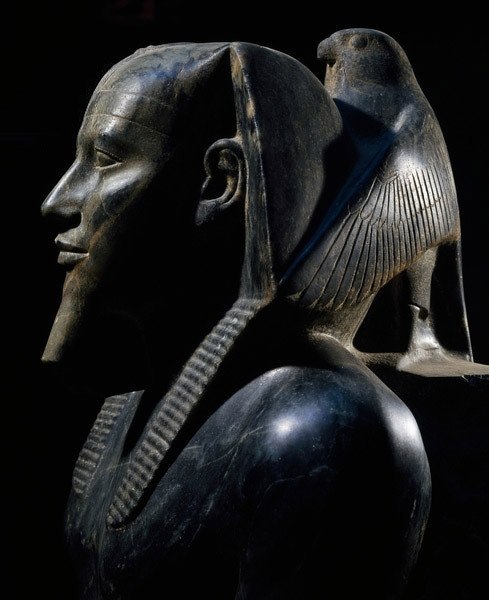
Khafre Enthroned
The purpose of the statue was to legitimize and celebrate the universal authority of the king, of whom the throne was one of the most powerful expressions, as the guarantor of the stability and unity of the country.
The concept is further emphasized by the presence of the falcon-god Horus, who protects the head of the king between his wings as though to underline the perfect symbiosis of the man and the god.
Old Kingdom, 4th Dynasty, around 2570 BC. Made out of anorthosite gneiss (related to diorite). Excavation by Auguste Mariette (1860)From the Valley Temple of Khafre. To be in the Grand Egyptian Museum, Giza. JE 10062
Read more
123 notes
·
View notes
Text
Baddie Check (Good qualities about you)🫦💋💄💅🏾
Tarot Reading


Pile 1

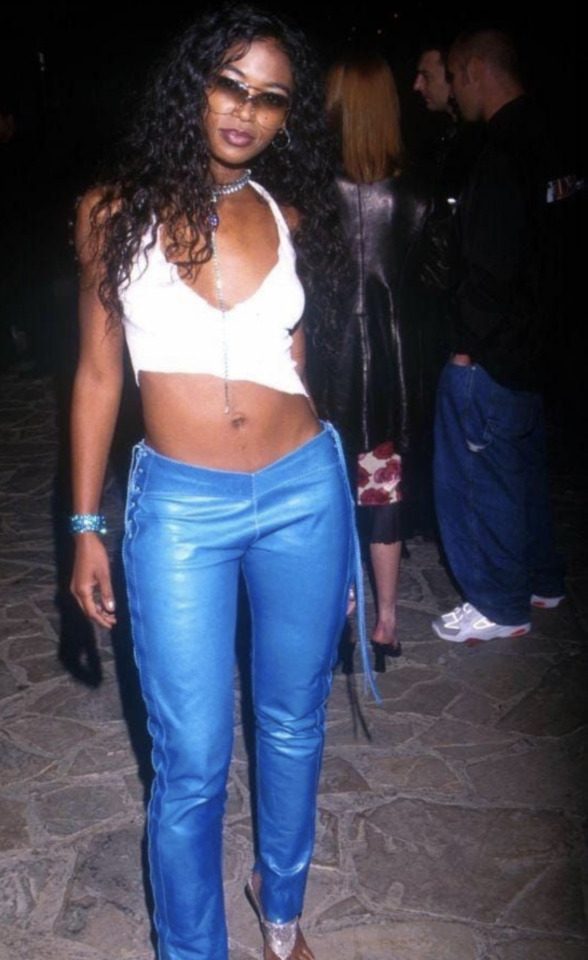

Pile 2 Pile 3
🔮 Welcome to my tumblr!! I’m 🔮youthnighttarot🤗
Things to know
💜This is for entertainment purposes only and, not to be taken seriously
💜Take what resonates leave the rest
💜All feedback is welcomed as longs as it’s respectful
✨Take a breath before you choose your pile

Pile 1

Tarot cards pulled: 10oS, 8oP (rv), 10oW
Oracle cards: Edward VIII (story may resonate with you watch a documentary) Lover card
First things first when I was shuffling I was supposed to say clear the energy ended up saying clear the check. So maybe you be clearing this check pile 1 because you a baddie that’s about their money!! Ok I’m not sure if you know this yet but you are a sex fiend….not like in the addiction sense just the energy that you give off. It’s like that girl/boy could rock my world. You’re also really goofy like you be playin LMFAOAOAOA frfr.
You may have been betrayed in the past or backstabbed by someone who you worked with. They weren’t putting in any work and, you had to constantly take the brunt/bulk of the work. This could have overwhelmed you and even strained your creativity but you came out on top. With the 10oS this woman has knives all in her back but she’s focused on her phone. You may not be as nonchalant but, you don’t give basic bottom barrel hoes energy and time they don’t deserve.
You’ve been through dark times and felt overwhelmed by creative project or just in general. You may have lacked motivation within your career or in regards to money/stability. People see this and view you as resilient and strong. You are that girl/guy because you never let this betrayal or malicious gossip make you skip a beat. You can carry a lot but that doesn’t mean that you should have to, though this is part of your hood qualities. It can easily become a bad habit if you let it get out of hand. You may have an online social media business and you are thriving but need time to rest. This is also what makes you a baddie you will work your ass off and rest just as hard. (Yesssss pile 1 can you help me out with that)
Extra
💅🏾A king is nothing without the woman he loves
💅🏾Make your own kingdom and choose your own family….I feel you go by this mantra 🕉️
💅🏾Your very luxurious
💅🏾You’re a good lover because you don’t rely on lies or rose colored glasses, trying to be the next Edward and Bella like it’s a movie. You take it seriously and are logical/reall about what a relationship entails
Pile 2

Tarot cards pulled: 7oC (rv), Judgement, the hanged man (rv)
Oracle cards: Gala Dalí, one eye open one eye closed
One of your good qualities great I should even say, is that everything good that comes in your life comes in 2s, 3s, or 4s. You have a lot of abundance surrounding yourself. Something regarding the eye of Horus is significant here. Ok some of the good qualities about you pile 2 is that you have a kind nature but you also know how to cut through bullshit. You are not one of those people floating through life and allowing things to happen to you versus for you.
You are quite a decisive person especially in matters relating to heart and emotions. You may be disconnected from certain religious ideals and people can view you as a hedonist. (Chile🙄) simply because you don’t always comply but little do they know spirit is divinely protecting you. You’re not emotionally unbalanced you feel how you feel no matter how hard someone tries to sway you.
You may not be spiritually bound to any particular religion and this scares people.
You could be a witch/high priestess for some of you. You’re just you and you don’t try to be anyone else but you. (Purr 🐈) So people could celebrate you or even look up to you many ones. (Archangel Micheal, Raphael, and Azriel are looking after you have a lot of power on your spirit team) (Yemaya and Oya for some of my Yoruba gyals) (Nana Asee for my Akan gyals shout out) (Aphrodite and Cupid?) (Freya and Odin) You have uncertainties sometimes but you’re emotions never cloud your judgment. You understand what it means to be in tune as you should!! You may have been spiritually inclined always but repressed for others peace of minds.
Extra
💅🏾 It is by being in the shadow that one emits the most light…you truly believe this and this way of thinking has greatly benefited you
💅🏾You used to constantly be looking over your shoulder or you just didn’t trust easily
💅🏾You no longer jump the gun, or assume you know someone’s nature until you see it in its truest form
Pile 3

Tarot cards pulled: 9oW, The Magician (rv), The hermit (rv)
Oracle cards: Marilyn Monroe, Magic is being used (rv)
So you know when to take time out for yourself first of all pile 3. You can sense when someone is trying to manipulate or play the con-game with you. You also know how to get people to do exactly what you want but, you don’t maliciously take advantage of people rather suggest. You take time to yourself in order to pondering your actions or how other people actions led up to your actions. So you may avoid it happening again at all cost. You are a dreamer. Again I’m getting your not afraid to reflect on your wrong doings…you take accountability.
You’re a person who knows when to shut social media off. You have no aspirations to chance fame/notoriety it just happens for you. You’re not caught up in trying to be a baddie you just simply want to be you. That is as all nothing less. Some of you could have some sort of connection to gypsies or Eastern European culture?
You believe in divinity and equality, you dress nicely as well. You know how to stand up for yourself by saying no…you are not afraid of sitting with yourself or your thoughts. You’ve traveled (physically or mentally) long and far in order to get to this point in your life. You have the emotions, the career skills, and the mindset to wether any storm. You are not deceptive but can sense deceptions easily.
Extra
💅🏾Never pick stability over a good time…at first I was like 🤔but what I got is that you don’t just choose something because it will bring you finances or wealth you choose to do something or be with someone because it makes you happy
💅🏾You don’t use spells and magic on people to get them to like you they just do
💅🏾Whatever story that people have in mind for you, you say to hell with and continue to be yourself
Call me beep me if you wanna reach me🔮📱
💟 @youthnighttarot ~ tumblr
Email~ [email protected]
💟 youthnighttarot1111 ~ PATREON EXCLUSIVES
#pac#pick a card#pick a pile#divine#spiritual vibrations#pick a photo#tarot reading#understanding#free tarot#tarot#tarotblr#daily tarot#free tarot readings#tarot tumblr#tarot deck#tarotonline#tarot cards#taroteverydamnday#tarotdaily#pick a picture#free pick a card#pick an image#free spirit#spiritualgrowth#spriritual#spiritualism#for entertainment purposes only#entertainment#growth#synergy
475 notes
·
View notes
Text
Tyrant’s Lullaby
Once upon a time, there was a glorious, terrible man. He built horrors. He built wonders. He brought monsters up from the deep. He took a child from the arms of a horrified, weeping family, and raised him not as a boy but as a general. He took a child and ruined his future, He took a child and made him a king, a pet, a dog. He marched armies over the face of the ravaged earth, and trampled all that did not kneel before the weight of the storm. He burned tundras to ash and shook the mountains until they crumbled, He boiled the seas to mist and the skies to charcoal. And when the scouring was done, and the earth was entombed in ashes, He turned His dreaming, endless glare upon His own.
He strangled the thunder that had bore Him a throne, He sent the golden, the children stolen from their cradles, to plunge down long knives into turned backs raised so fervently before His regard. With their blood they had built Him a kingdom, and with their bones He crowned Himself a throne. And when Terra knelt, cowed, battered, in awe and in fear, He turned His gaze skywards.
And the stars felt His benevolent wrath.
He bore twenty sons, two of them sacrificed, and He unleashed them upon the earth, the skies, the stars. They hunted for Him, they loved Him, they adored Him, yet some had strayed too far from His light, some had gazed upon the man that would be a god with sullen, hungry eyes, doing His bidding, and knowing His wrath. They are those who were there when affection curdled to treachery.
There was no peace among the stars, no mercy, no rest, simply a slow, heartless drowning as the gold claimed them limb by limb, inch by inch, and swallowed them into the endless light.
And then war. Treachery, when the stars themselves were swallowed. When brother turned against brother, and father against son. When the Phoenix cleaved the Gorgon’s head from his shoulders, and the Immortal bashed in the Haunter with a hammer, when the Angel fell to the Traitor and He stained the Palace’s stones red with His son’s blood. When Horus burned, when the Angel shed his wings and the golden were shattered upon the anvil of betrayal, the Father fell to His son.
He was buried upon a rotting throne, screaming hollowly into the fading dark, the stars basking in His rage, His pity and His wrath. He was buried alive in a tomb made from gold, ashen bones ruling a decaying kingdom from the grave, dreaming forever of brighter days. Dreaming of His sons, and how He betrayed them first, how they betrayed Him, how they abandoned His bones. And finally could the golden rest, bathed in the heart of their greatest shame, enshrining the decaying dust of a master they had failed, in an empire He had forsaken.
That man was the Emperor. That corpse is the Emperor, golden, glorious, and decaying just like the slaves.
Do not think your bones different from a slave's. When you rot, your corpse will be indistinguishable from those of your servants.
#the primarchs#primarchs#traitor primarchs#horus lupercal#fulgrim#ferrus manus#sanguinius#warhammer 40k#sculptor of crimson#wh40k#constantin valdor#warhammer#wh40k writing prompts#adeptus custodes#emperor of mankind#drabble#primarch#horus heresy#fanfic#I wrote this a long time ago#here it is#writing#thunder warriors#great crusade#unification wars#vulkan#konrad curze
82 notes
·
View notes